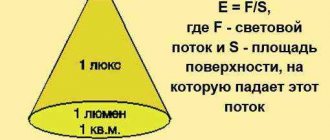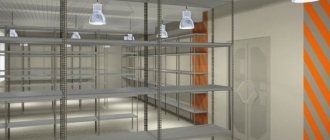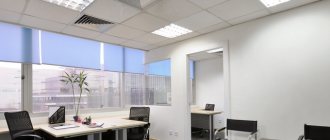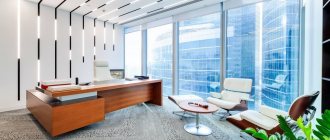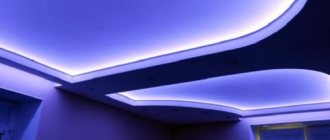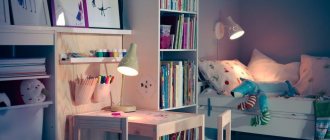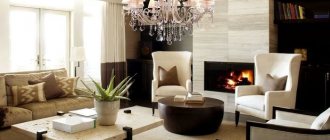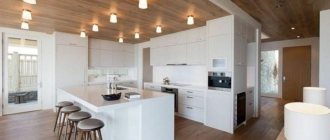It is unlikely that a modern building can completely do without electricity, but there are a number of principles and technologies that help increase natural light in the house and at the same time save on energy bills. We talk about this in the new issue of our ABC of Sustainable Housing.
Natural lighting involves the use of light that is formed naturally and penetrates into the room through openings or light guides.
Proper use of natural lighting helps make an apartment energy efficient and reduce energy costs by 40–80% monthly.
It is good for well-being, since, unlike artificial sources, sunlight does not flicker and does not put additional strain on the eyes, and also helps the production of vitamin D. It is believed that a lack of natural light threatens “light starvation”, which negatively affects both psychological and physical state of a city resident.
Reading room of the Alvar Aalto Library in Vyborg. Photo: Alexander Nikolaev / vk.com/aaltolibrary
Roof of the Alvar Aalto Library in Vyborg. Photo: Ludvig14/Wikimedia.org
Natural lighting has played an important role in architecture since ancient times. The reason was not only the lack of electricity, but also the dramatic effect produced by well-directed sunlight. The rays penetrating inside Gothic cathedrals through colored stained glass windows leave few people indifferent even in the 21st century.
Speaking about the use of light in architecture, one can recall Alvar Aalto's skylights in the Vyborg library, Ludwig Mies van der Rohe's Farnsworth House in Illinois, or Peter Zumthor's Thermal Baths in Swiss Waltz. In each of these projects, created at different times and serving different functions, natural light plays an important role.
Interiors and windows of the Farnsworth House, designed by Ludwig Mies van der Rohe. Photo: Victor Grigas / Wikimedia.org
The traditional source of natural light in apartment buildings is a window. The level of illumination directly depends on its size and location. Sometimes the size and shape of the window do not correspond to the size and depth of the room, which makes it impossible to provide the desired level of illumination. The side on which the windows face is also important. As a rule, developers try to “orient” the windows of the living room, nursery and office, which require good insolation, to the east and south.
Facts about natural light and vision
As mentioned earlier, daylight is necessary in buildings
It should be sufficient in a school, although proper lighting in a small sales area or even a warehouse is equally important. In the lives of train drivers, as well as drivers of public and private transport, lighting generally plays a key role.
They need to clearly see and distinguish between signals and instrument readings located on control panels. Drivers should also have a clear view of the road ahead. In this case, the correct distribution of light sources is the key to the safety of the driver and passengers.
The human eye distinguishes objects due to the difference in brightness of the object itself and the background - this is contrast sensitivity. The smaller the differences a person notices, the higher the contrast sensitivity of his eyes. However, it has a limit, after which it decreases.
In addition, the eyes have a resolving power associated with the ability to distinguish the smallest details. Normally it is equal to one. Resolving power decreases as the eye's sensitivity to small elements increases.
Visual acuity is inversely proportional to resolving power. It just increases as a person’s ability to notice the smallest details increases. If a person’s resolving power is 2, then his visual acuity is 0.5.
The performance of vision is determined by a number of factors:
- the brightness of the object that a person is looking at;
- contrast between subject and background, as well as viewing time and angular dimensions.
The visual performance of the eye becomes better if the working surface is well illuminated. Also, shine should be removed from the field of view. Visual work is divided into 5 categories (see table).
| Vision accuracy | Minimum size of distinguishable object | Vision work category |
| Highest | Up to 0.15 mm | I |
| Very high | 0.15 - 0.3 mm | II |
| High | 0.3 - 0.5 mm | III |
| Average | 0.5 - 1 mm | IV |
| Small | 1 - 5 mm | V |
Effect of lighting on vision
Decorative light in the interior
Decorative lighting does not carry a special functional load, but it creates a unique atmosphere in the room. Options for implementing the idea:
- Retro lamps are lighting devices decorated in original glass bulbs with an antique design. They can be placed both on the ceiling and on the walls. A hanging “bouquet” of such lamps looks especially impressive.
- LED strip is a decorative light element that is often used for contour lighting of objects and structures. You can select a specific shade of light and adjust the brightness of the streams.
- Garlands are a design of small light bulbs emitting monochromatic or colored streams. Many are accustomed to using such devices as holiday decorations, but they may well take a permanent place in the interior.
- Neon elements are light compositions made from curved tubes filled with gas. This decor looks amazing against the background of dark wall decoration.
- LED lighting for mirrors and paintings are special lamps that are attached directly to decorative elements. They emit soft currents, making the accessories stand out in the interior.
If you think through the composition wisely, creative lighting will add zest to the interior of the rooms. You can turn the ideas of creating light elements with your own hands into reality. You will get a unique design that no one else will have.
Creative artificial lighting with garland
Creative artificial lighting with retro lamps
Creative artificial lighting with LED strip
Creative artificial lighting neon element
Dust is one of the most harmful pollutants
Hygienists have long noticed that dust, when it enters the body, harms a person in several ways. Russian doctor F.F. Erisman described this process in his scientific works. It turns out that dust damages the respiratory system, scratching it with the sharp edges of small particles (mechanical effects), causes poisoning with toxic substances (chemical effects), and transports pathogenic bacteria and viruses inside a person (bacteriological effects).
Dust always dances in the air around us. And there is no escape from it. This problem is especially acute in factory workshops and premises. Small particles of industrial dust up to 5 micrometers in size penetrate very deeply into the lungs - right up to the alveoli. This means that the harmful effects are increasing. And particles ranging in size from 5 to 10 micrometers, as a rule, remain in the upper respiratory tract.
To assess the harmful effects of dust on the human body, it is necessary to know its approximate amount in the air and its composition. The dust content in the air basin is measured by the mass of dust particles per unit volume and is expressed in milligrams per cubic meter. Sometimes another value is used - a specific number of dust particles in 1 cubic centimeter of air.
The determining factor influencing the development of dust pathology is the mass of dust accumulated in the body. Although its quantity depends on the concentration of dust particles in the air and their dispersion.
Lighting standards for the workplace
There are various indicators that indicate the optimal number of suites for different properties. The main groups are an office, a production facility, a warehouse, and a residential building. All requirements are drawn up in accordance with SNiP and are indicated in the LC for each site.
Light level in the office
- For a general office where a computer device is used – 200-300 Lux.
- For offices with a large area and a designer layout - 400 Lux.
- For offices where work with drawings is carried out - 500 Lux.
- For a conference room – 200 Lx.
- For stairs and escalators – 50-100 Lux.
- For the corridor and hall – 50-75 Lx.
- For the archive – 75 Lk.
- For the pantry – 50 Lux.
Hygienic requirements for natural lighting in the home
Indicators. The most common methods for assessing natural lighting are lighting and geometric. The first includes the determination of the coefficient of natural illumination (KEO), the second - the determination of the light coefficient, the angle of incidence of light rays, and the angle of the opening.
KEO is the ratio of the illumination of a point located inside a room to the simultaneous illumination of a horizontal surface located outside the room and illuminated by diffuse light from the entire sky.
KEO= Ep/Eo100%,
where En is the illumination (lx) of a point located indoors at a distance of 1 m from the wall opposite the window; E0 is the illumination (lx) of a point located outdoors, provided it is illuminated by diffused light from the entire sky.
The value of this coefficient is expressed as a percentage and is normalized depending on the purpose of the room and the nature of the work performed in it. For residential premises, KEO must be at least 0.5
The angle of incidence of light rays is formed by two lines emanating from one point on the table to the upper and lower edges of the window. The magnitude of this angle decreases as you move away from the window. Normal illumination with natural light will be ensured if the angle of incidence of light rays is less than 27 degrees. This indicator allows only a rough estimate of the level of natural illumination in the premises, since it does not take into account many factors that influence the amount and duration of illumination. It must be resorted to when the KEO cannot be determined (there are no graphs, nomograms and corresponding tables).
The angle of the hole allows us to judge the size of the vault of heaven directly illuminating the place under study. The larger the angle, the larger the visible area of the sky and the better the lighting.
The angle of the opening is also formed by two lines emanating from the observation point to the upper edge of the window and to the upper point of the opposing building or tree (obscuring the light of an object) located in front of the window outside the building. The magnitude of this angle characterizes the visible part of the sky, i.e., it gives an idea of the degree of darkening of the room by tall objects located in front of the windows. The hole angle must be at least 5 degrees.
Luminous coefficient is the ratio of the glazed surface of windows to the floor area in the room. It is expressed as a fraction. The numerator is the size of the glazed surface of the windows, and the denominator is the size of the floor area. The numerator is taken as one, and in this case the denominator is set to a number showing how much of the floor area is occupied by the glazed surface of the windows. The standard luminous coefficient depends on the nature of the lighting. For residential premises it should be at least 1/8-1/10.
All of the above indicators of natural light are, to one degree or another, related to the insolation of premises. Insolation is the irradiation of surfaces by direct sunlight. In accordance with the “Sanitary norms and rules for ensuring insolation of residential premises and public buildings, as well as residential areas of cities and other populated areas”, it is necessary to ensure continuous direct solar irradiation in territories and premises for at least three hours a day for buildings for the period from 22 March to September 22 in areas starting from 60° N. w. and further south, from April 22 to August 22 for areas north of 60° N. w. The insolation conditions of the territory and premises are calculated when choosing types of buildings and their orientation, when determining the relative placement of buildings, choosing sites for children's institutions and schools, playgrounds and utility areas.
Categories: General information about construction. Tags: Natural lighting. Leave a comment
DAYLIGHT
Premises with constant occupancy should, as a rule, have natural lighting - illumination of the premises with sky light (direct or reflected). Natural lighting is divided into side, top and combined (top and side).
▼Natural room lighting depends on:
1. Light climate –
a set of natural lighting conditions in a particular area, which consist of general climatic conditions, the degree of transparency of the atmosphere, as well as the reflective abilities of the environment (albedo of the underlying surface).
2. Insolation mode –
the duration and intensity of room illumination by direct sunlight, depending on the geographic latitude of the place, the orientation of buildings to the cardinal points, shading of windows by trees or houses, the size of light openings, etc.
Insolation is an important healing, psycho-physiological factor and should be used in all residential and public buildings with permanent occupancy, with the exception of certain rooms of public buildings, where insolation is not allowed due to technological and medical requirements. According to SanPiN No. RB, such premises include:
§ operating rooms;
§ hospital intensive care rooms;
§ exhibition halls of museums;
§ chemical laboratories of universities and research institutes;
§ book depositories;
§ archives.
The insolation regime is assessed by the duration of insolation during the day, the percentage of the insolated area of the room and the amount of radiation heat entering the room through the openings. Optimal insolation efficiency is achieved by daily continuous irradiation of premises with direct sunlight for 2.5 - 3 hours.
▼Depending on the orientation of building windows to the cardinal points, three types of insolation regime are distinguished: maximum, moderate, minimum.
(Appendix, Table 1).
With a western orientation, a mixed insolation regime is created. In terms of duration it corresponds to a moderate insolation regime, and in terms of air heating - to a maximum insolation regime. Therefore, according to SNiP 2.08.02-89, windows of intensive care wards, children's wards (up to 3 years old), and playrooms in children's departments are not allowed to be oriented to the west.
In mid-latitudes (territory of the Republic of Belarus) for hospital wards, day care rooms for patients, classrooms, group rooms of children's institutions, the best orientation, providing sufficient illumination and insolation of rooms without overheating, is the southern and southeastern (acceptable - SW, E).
The windows of operating rooms, resuscitation rooms, dressing rooms, treatment rooms, delivery rooms, therapeutic and surgical dentistry rooms are oriented to the north, northwest, northeast, which ensures uniform natural illumination of these rooms with diffused light, eliminates overheating of the rooms and the blinding effect of sunlight, and also the appearance of shine from a medical instrument.
Regulatory requirements at a glance
The main regulatory document regulating natural lighting in residential buildings is SanPiN 2.2.1/2.1.1.1278-03
“Hygienic requirements for natural, artificial and combined lighting of residential and public buildings” (download a scanned copy) with amendments and additions in 2010 (download).
The standards indicate the values of the standard indicator of natural lighting of premises - KEO
(natural light factor) and control points at which these values must be ensured are determined.
Natural lighting in residential buildings is standardized only in living rooms and kitchens
, not counting the general house evacuation routes. In other rooms, a lack of natural light is allowed.
Natural lighting of areas of territories, both urban and garden, is not specified in the standards
.
There are insolation standards for areas of territories (download a scanned copy), but there are no standards for natural lighting of areas of territories
.
The standard value of KEO depends on the location of the light opening
(side or top).
Considering that overhead natural lighting of residential premises is exotic and less sensitive to shading by surrounding buildings, further we will consider only natural lighting of premises with lateral light openings. In this case, the KEO value should be 0.5%
. SanPiN 2.2.1/2.1.1.1278-03 provides different values for offices and children’s rooms, but in design practice they are practically not used, with the exception of the construction of private houses on an individual order. It is assumed that residents of mass-built residential buildings accept the assignment of rooms at their own discretion, allocating the brightest areas of the apartments for children's rooms and offices. In addition, the newer SanPiN 2.1.2.2645-10 “Sanitary and epidemiological requirements for living conditions in residential buildings and premises” does not provide these values.
Natural lighting in a room depends not only on the KEO value, but also on the location of the point at which it is provided
. In all residential premises, the KEO calculation (control) point is located on the floor, along the axis of the room. If the room has a non-rectangular shape, for the correct location of the calculation (control) point, the shape of the room should be reduced to a rectangle, one of the sides of which is a wall with a light opening.
The standard value of KEO, depending on the composition of the rooms in the apartment, should be provided either in the center of the room or in the depths
(at a distance of 1 m from the wall farthest from the window with a light opening). In the interior of the room, the design point should be located in the living room of a one-room apartment, in one of the rooms of two- and three-room apartments, or in two rooms of apartments with more than three rooms. In other living rooms of apartments and kitchens, the control point is located in the center of the room. Particular attention is paid to the case when living rooms have two windows in opposite or angled walls (two-way natural lighting). In this case, the KEO control point is located in the center of the room, including in one-room apartments.
Standardization and assessment of natural lighting in premises
Standardization and hygienic assessment of natural lighting of existing and designed buildings and premises is carried out in accordance with SNiP II-4-79 lighting engineering
(instrumental) and
geometric
(calculation) methods.
The main lighting indicator of natural lighting of premises is the natural illumination coefficient
(KEO) - the ratio of natural illumination created at a certain point on a given plane inside a room by the light of the sky to the simultaneous value of external horizontal illumination created by the light of a completely open sky (excluding direct sunlight), expressed as a percentage:
KEO = E1/E2 100%,
where E1 – indoor illumination, lux;
E2 – outdoor illumination, lux.
This coefficient is an integral indicator that determines the level of natural light, taking into account all factors influencing the conditions for the distribution of natural light in the room. Measurement of illumination on the working surface and in the open air is carried out with a lux meter (Yu116, Yu117), the operating principle of which is based on the conversion of the energy of the light flux into electric current. The receiving part is a selenium photocell having light-absorbing filters with coefficients of 10, 100 and 1000. The photocell of the device is connected to a galvanometer, the scale of which is calibrated in lux.
▼When working with a lux meter, the following requirements must be observed (MU RB 11.11.12-2002):
· the receiving plate of the photocell must be placed on the working surface in the plane of its location (horizontal, vertical, inclined);
· random shadows or shadows from people and equipment should not fall on the photocell; if the workplace is shaded during work by the worker himself or by protruding parts of equipment, then the illumination should be measured under these actual conditions;
· the measuring device should not be located near sources of strong magnetic fields; Installation of the meter on metal surfaces is not allowed.
The coefficient of natural illumination (according to SNB 2.04.05-98) is normalized for various rooms, taking into account their purpose, the nature and accuracy of the visual work performed. In total, 8 categories of visual accuracy are provided (depending on the smallest size of the discrimination object, mm) and four subcategories in each category (depending on the contrast of the object of observation with the background and the characteristics of the background itself - light, medium, dark). (Appendix, Table 2).
With side one-sided lighting, the minimum value of KEO is standardized at the point of the conventional working surface (at the level of the workplace) at a distance of 1 m from the wall farthest from the light opening. (Appendix, Table 3).
Principles of illumination regulation
As mentioned earlier, the level of illumination of the room must meet the standards of SNiP dated May 23, 1995 “Natural and artificial lighting”. The document specifies hygienic requirements, methods and principles for assessing illumination, as well as the coefficient of natural light that various types of premises must comply with.
These sanitary standards take into account not only the purpose of the premises (public, residential, administrative and household), but also the categories of visual work. The document also talks about light openings and provides a zoning of Russia according to the light climate. The Russian Federation is divided into 5 climatic regions.
- Smolensk, Ryazan, Kaluga, Moscow, Tula, Vladimir, Novosibirsk, Kurgan, Sverdlovsk, Kemerovo, Nizhny Novgorod regions, the republics of Mordovia, Chuvashia, Tatarstan, Bashkortostan, Yakutia, Udmurtia, Chukotka Autonomous Okrug, Krasnoyarsk and Khabarovsk territories.
- Oryol, Kursk, Belgorod, Chita, Bryansk, Penza, Lipetsk, Samara, Voronezh, Saratov, Sakhalin, Magadan, Ulyanovsk, Volgograd, Tambov regions. Republics of Komi, Kabardino-Balkaria, Chechnya, Ingushetia, Altai, part of Yakutia, Tyva, Buryatia. Khanty-Mansi Autonomous Okrug, part of Khabarovsk Territory.
- Pskov, Kaliningrad, Novgorod, Yaroslavl, Tver, Ivanovo, Kostroma, Vologda, Kirov regions. Karelia. Nenets and Yamalo-Nenets AO.K
- Murmansk and Arkhangelsk regions.
- Astrakhan and Amur regions; Stavropol, Krasnodar and Primorsky territories. Republics of Dagestan and Kalmykia.
Standardization of window openings depending on the light climate
For each of these regions, the necessary indicators of artificial and natural lighting are given (see table on sunlight):
| Openings for light (location) | The cardinal directions where the light openings are located | Light climate (coefficient) | ||||
| Administrative district number | ||||||
| 1 | 2 | 3 | 4 | 5 | ||
| External walls of the building | North | 1 | 0,9 | 1,1 | 1,2 | 0,8 |
| North-West and North-East | 1 | 0,9 | 1,1 | 1,2 | 0,8 | |
| East and West | 1 | 0,9 | 1,1 | 1,1 | 0,8 | |
| SE, SW | 1 | 0,85 | 1 | 1,1 | 0,8 | |
| South | 1 | 0,85 | 1 | 1,1 | 0,75 | |
| Anti-aircraft lights | — | 1 | 0,9 | 1,2 | 1,2 | 0,75 |
It is very important to correctly calculate the coefficient of natural light in the room. As a unified system for calculating KEO, it is customary to use the formula: e = EB / EN. https://www.youtube.com/embed/S7XVDFHsQ9Q
E in this case means KEO, which is obtained by dividing the illumination of the room with heavenly light by the illumination of the external horizontal surface. This method of calculating natural light allows you to accurately determine how windows and lanterns should be positioned in a building under construction.
Lighting requirements
Side lighting (windows, stained glass, strip glazing)
II. Top lighting:
— anti-aircraft lights (strip, piece), light domes;
— lanterns with double-sided glazing (rectangular, trapezoidal);
- lanterns with one-sided glazing - shades;
— hollow extended light guides – a new technique for overhead lighting.
III. Combined lighting.
STANDARDING NATURAL LIGHT
en – normalized value of KEO, depends on the natural lighting system.
1) Side one-way lighting:
It must be provided in the depths or in the center of the room (depending on the purpose)
In areas with insufficient natural light, combined lighting
, in which
natural
lighting is supplemented with
artificial lighting.
Combined lighting
It is not allowed to design in living rooms, children's and medical institutions.
2) With lateral two-way lighting, it should be provided in the center of the room
3) With overhead and combined lighting, the average value
KEO – esr.
The normalized value of KEO is also determined by the nature and accuracy of visual work, that is, the purpose of the room, and takes into account the regional characteristics of the light climate.
en = en'·m
en´ – normative value of KEO, determined by the nature and accuracy of visual work.
Visual work
characterized by the object of discrimination, its size (as well as the contrast between the object and the background).
The object of discrimination
is a separate part of the object in question (a thread of fabric, a line, a scratch, etc.)
en´ for industrial premises
accepted depending on the category of visual work,
for public
- depending on the purpose of the room.
m – light climate coefficient, depends on:
• construction area;
• type of light opening;
• orientation of the light opening.
It is allowed to reduce the calculated value of KEO from the standardized value by no more than 10%.
CALCULATION OF NATURAL LIGHT
Date added: 2018-03-01; ;
Types of Natural Light
During its development, humanity has come up with many ways to provide its home with sunlight. But all these methods can be divided into three methods.
Side lighting natural
So:
- The most commonly used is side lighting . In this case, the light streams through the opening in the wall and falls on the person from the side. Where did the name come from?
Side lighting is quite easy to implement and provides high-quality illumination inside the house. At the same time, in wide halls, when the walls opposite the window are located far away, sunlight does not always reach all corners of the room. To do this, increase the height of the window openings, but such an exit is not always possible.
Natural overhead lighting
- More interesting for such rooms is overhead lighting . In this case, the light falls from the openings in the roof and streams onto the person above.
This type of lighting is almost ideal. After all, with proper planning, you can provide illumination to any corner of the house.
But as you understand, it is only possible with a one-story plan. And heat loss from this type of natural lighting is an order of magnitude higher. After all, warm air always rises, and there are cold windows.
Combined natural lighting
- That is why there is natural combined lighting. It allows you to take the best of the first two types. After all, combined lighting is called lighting in which the light falls on a person from both above and below.
But as you understand, this type of lighting is also possible only in a one-story building or on the upper floors of multi-story buildings. But the cost of such window systems is not an unimportant limiting factor in their use.
COLOR DESIGN OF EQUIPMENT AND PRODUCTION PREMISES
In the production environment, color is used as a means of information and orientation, as a factor of psychological comfort and as a compositional tool. Color affects a person’s performance, fatigue, orientation, and reaction. Cool colors (blue, green, yellow) have a calming effect on a person, warm colors (red, orange) have a stimulating effect. Dark colors have a depressing effect on the psyche.
When choosing colors and interior color design, you must follow the guidelines for rational color finishing of surfaces of industrial premises and technological equipment GOST 26568-85* and GOST 12.4.026-76* SSBT.
The color scheme of the interior is characterized by color gamut, color contrast, amount of color and reflection coefficients. Color spectrum
- this is a set of colors adopted for the color scheme of the interior.
It can be warm, cold and neutral. For foundries, forges, and heat treatment shops, a cool color scheme is appropriate. Color contrast
is a measure of the difference between colors in terms of their brightness and hue. Color contrast can be large, medium or small.
Quantity of color -
This is the degree of color sensation, depending on the color tone, color saturation of the object and background, on the ratio of their brightness and angular dimensions.
When choosing a color scheme for interiors, you need to take into account the category of work, its accuracy, and sanitary and hygienic conditions. A significant role in the interior belongs to the choice of reflection coefficients (P) of surfaces.
The ceilings of the premises are painted white or close to white. Trusses and floors are painted in light colors. The lower part of the walls is painted in calm colors (light green, light blue). Metal-cutting machines are painted in light green, foundry equipment in beige, thermal equipment in silver, transport mechanisms in green.
According to GOST SSBT 12.4.026-76 “Signal colours”, red is used to warn of obvious danger, prohibition, yellow warns of danger, draws attention, green means regulation, safety, blue means information. Trolleys, electric cars, lifting mechanisms are painted yellow with yellow stripes on a black background, fire-fighting equipment is painted red
Pipelines and cylinders are painted in different colors: air ducts are blue, water pipes for process water are black, oil pipes are brown, oxygen cylinders are blue, carbon dioxide cylinders are black. The same GOST introduced safety signs: prohibitory signs - a red circle with a white stripe; warning signs - a yellow triangle with a danger printed on it; prescriptive - a green circle, inside of which there is a white square with prescriptive information; index marks - a blue rectangle with a square in the middle.
LITERATURE:
1. Alekseev S.V., Usenko V.R. Occupational hygiene. M: Medicine, - 1998.
2. Life safety: Textbook. Part 2 /E.A. Rezchikov, V.B. Nosov, E.P. Pyshkina, E.G. Shcherbak, N.S. Chvertkin /Edited by E.A. Rezchikova. M.: MGIU, - 1998.
3. Dolin P.A. Safety Handbook. M., Energoizdat, - 1982.
4. Ivanov B.S. Man and habitat: Textbook, M.: MGIU, - 1999.
Occupational safety in mechanical engineering: Textbook /Edited by E.Ya. Yudin and S.V. Belova, M. - 1983.
Hygienic requirements for natural lighting
From a hygienic point of view, the most appropriate orientation is to the south and southeast.
In mid-latitudes, the long axis of the building should be directed from northeast to southwest. In this case, residential premises are located to the south-east, and auxiliary premises - to the north-west.
It is not recommended to orient living quarters to the west, since with such an orientation significant radiation is observed in the summer and insignificant in the winter.
In the northern and southern latitudes of the USSR, it is recommended that the axes of buildings be located from west to east (equatorial) with the windows of living rooms oriented to the south and auxiliary rooms to the north; b) size and location of windows. The upper edge of the window should be located closer to the ceiling, which allows light to penetrate deeper into the room. The width of the partitions should not exceed one and a half width of the window openings
The size and number of light openings and the nature of the bindings are important for illumination. The best shapes are rectangular windows;
c) the depth of the room (in rooms with side one-way lighting - this is the distance from the wall with windows to the opposite wall). The depth of the room should not exceed more than 2 times the distance from the top edge of the window to the floor (no more than 6.5 m); d) gap between buildings. This gap must be no less than double the height of the opposite tall building; e) quality of glass and degree of purity. Ordinary glass absorbs some of the light, especially the ultraviolet portion of it. Dirty glass reduces light transmission by 25-50%. Curtains on windows can absorb up to 40% of light; f) the nature of the color of the walls and ceiling. Light colors, reflecting light, increase illumination.
Various indicators are used to characterize natural light. One of them is the coefficient of natural illumination (KEO), which means the ratio of the illumination of a point located indoors to the illumination of any point located on the same plane, located outside the room and illuminated by diffused light from the sky. Its value is expressed as a percentage and is standardized depending on the purpose of the room and the nature of the work performed. For residential premises it must be at least 0.5%.
Luminous coefficient (LC) is the ratio of the glazed surface of windows to the floor area in the room. It is expressed as a simple fraction, where the numerator is one, the denominator is a number showing how much of the floor area is occupied by the glazed surface of the windows.
The standard luminous coefficient depends on the nature of the room. For residential premises, the luminous coefficient should be at least 1/8-1/10.
Considering the bactericidal and healing effect of sunlight, it is advisable to orient hospital rooms to the south. The light coefficient in the wards should be in the range of 1:6-1:7, the natural light coefficient should be 1%. Artificial lighting in the rooms with incandescent lamps is 30 lux, with fluorescent lamps - 75 lux. It is advisable that each bed have local lighting. Night lighting must be provided in the wards.
What documents regulate lighting?
Regulatory documentation that regulates local lighting and other issues:
- building codes and regulations (SNiP 23-05-95);
- epidemiological documents that impose sanitary requirements (SanPiN 2.2.4.3359-16);
- GOST R 55710-2013.
Individual organizations may also wish to follow the guidance of industry documents, which will define the relevant provisions and regulatory values that will need to be met.
The requirements of the documents listed above apply to both completed premises (industrial purposes, etc.) and to premises that are under construction.
Hygienic requirements for natural and artificial lighting
In residential buildings located in the central, historical zone of the city, the location of the design point is taken in the center of the room, regardless of the number of rooms in the apartment.
The compliance of natural lighting in residential buildings with the requirements of the standards is determined by calculations when designing a building built into an existing building.
In this case, the calculation of natural lighting is carried out both for apartments of designed residential buildings, and for apartments of buildings falling within the shading zone of new construction.
The results of natural lighting calculations, however, depend on how competently and correctly they are performed. The reason for a possible violation of natural lighting standards may be the underestimation of this factor by the project authors at the stage of making fundamental design decisions. If the construction of the designed building is completely completed, it is customary to measure the KEO.
Calculation of KEO can also be carried out in cases where the conditions necessary for taking measurements are impossible or difficult to fulfill (light interior decoration, lack of furniture, lack of shading by green spaces, etc.).
A violation of the legally established norms for natural lighting in residential premises, established by calculation or measurements, is grounds for going to court.
LLC "INSOLYATION" - calculations of natural light and insolation, consultations on regulatory issues.
Write to: [email protected]
Call:
+7 (495) 643 34 40
to the beginning
Assessing natural light.
Methods for assessing natural light
The standardization and hygienic assessment of natural lighting is summarized from the analysis of two methods: lighting, that is, instrumental, and geometric, that is, calculated.
Lighting method
The main indicator of the lighting method is the coefficient of natural light. It is determined by the formula:
KEO=E1E2×100%{\displaystyle KEO={\frac {E1}{E2}}\times 100\%},
where E1
- indoor lighting LM,
E2
- outdoor lighting LM.
Depending on the type of premises, the type of activity that is carried out there, the KEO standards are met, which are set out in SanPiN 2.2.1/2.1.1.1278-03 “Hygienic requirements for natural, artificial and combined lighting of residential and public buildings” (approved by the Main State sanitary doctor of the Russian Federation April 6, 2003)
Hole angle
Formed by two lines emanating from the measurement point. The first is carried out to the upper edge of the window, the second - to the upper edge of the opposing building. The norm is at least 5˚.
Depth coefficient (DC)
Laying depth coefficient (CD) is the ratio of the distance from the light-carrying surface to the opposite side to the height from the floor to the upper edge of the window. In accordance with the standards, it should not exceed 2.5.
Methods for proper planning of natural lighting
But knowing the types of natural lighting, we are not one step closer to solving the question of how to organize proper lighting at home? To answer this, let us look at the main stages of planning step by step.
Standards for natural lighting of buildings
In order to properly plan lighting, we first of all must answer the question, what should it be? The answer to this question is given to us by SNiP 23 – 05 – 95, which sets KEO standards for industrial, residential and public buildings.
KEO calculation
- KEO is the natural light coefficient. It is the ratio between the level of natural light at a certain point in the house and the illumination outside the room.
- The optimality of this parameter was calculated by research institutes and summarized in a table, which has become the norm in design. But in order to use this table we need to know our latitude.
Light climate zones
- From the lessons of BZD and geography, you must remember that the further south you go, the higher the intensity of the solar flux. Therefore, the entire territory of our country was divided into five light climate zones, each of which has two subspecies.
- Knowing our light climate zone, we can finally determine the KEO we need. For residential buildings it ranges from 0.2 to 0.5. Moreover, the further south you go, the smaller the KEO.
- This is again due to geography. After all, the further south you go, the higher the outdoor illumination. And KEO is the ratio of illumination outside the room and inside it. Accordingly, to create the same level of illumination for houses in the south and north, the latter will have to make more efforts.
KEO calculation point
- To move on, we need to find out where is this point in the house for which we will determine the level of illumination? The answer to this question is given to us by clauses 5.4 - 5.6 SNiP 23 - 05 -95.
- According to them, with two-way side lighting of residential premises, the normalized point is the center of the room. With one-way side lighting, the normalized point is a plane one meter from the wall opposite the window. In other rooms, the normalized point is the center of the room.
Note! For one-, two- and three-room apartments, this calculation is made for one living room. In a four-room apartment, this calculation is made for two rooms.
KEO calculation points for various lighting systems
- For overhead and combined lighting, the normalized point is a plane one meter from the darkest walls. This standard also applies to industrial premises.
- But everything that we have given above is prescribed for use in residential and public buildings. With production, everything is a little more complicated. The fact is that production is different. On some I process meter-long workpieces, while on others I deal with microcircuits.
- Based on this, all types of work were divided into eight classes depending on the level of visual work. Where products smaller than 0.15 mm are processed, they were assigned to the first group, and where accuracy is not particularly needed, they were assigned to the eighth. And for industrial enterprises, KEO is chosen based on the level of visual work.
Selecting window systems for a building
Natural light will enter our building through the windows. Therefore, knowing the standards that we need to comply with, we can move on to choosing windows.
- The very first task is choosing window systems. That is, we must decide what kind of lighting we will have - top, side or combined in each room. To answer this question, you need to take into account the architectural structure of the building, its geographical location, the materials used, the thermal efficiency of the house, and of course the price will play an important role.
- If you opt for overhead lighting, then you can use so-called skylights or skylights. These are special structures that often, in addition to light, also provide ventilation for buildings.
- Light aeration lanterns in most cases have a rectangular shape. This is due to ease of installation. At the same time, the triangular shape is considered the most successful in terms of lighting. But for triangular skylights there are practically no reliable systems for raising windows for ventilation.
- Light aeration lamps are usually installed above industrial buildings with high internal heat generation, or on buildings located in southern latitudes, as in the video. This is due to the large heat losses of such window systems.
| Rectangular aeration lanterns are recommended for use in climate zones II-IV. Moreover, if the installation is carried out in areas south of 55° latitude, then the orientation of the lantern should be south and north. Such lamps should be used in buildings with excess sensible heat above 23 W/m2, and with a level of visual performance of IV-VII category. |
| Trapezoidal aeration lanterns are designed for the first climate zone. They are used for buildings in which class II-IV visual work is performed and with excess sensible heat above 23 W/m2. |
| It is recommended to install skylights in climate zones I-IV. In this case, when buildings are located south of 550, diffuse or heat-protected glass should be used as light transmitting materials. It is used for buildings with excess sensible heat of less than 23 W/m2 and for all classes of visual work. It is important to note that the lights must be evenly spaced across the entire roof area. |
| A skylight with a light-conducting shaft can be used for all climatic zones. It is usually used for buildings with air-conditioned air and a small range of temperature differences (for example, it is quite possible to install it yourself in residential buildings), as well as for areas where class II-VI work is performed. They are widely used in buildings with suspended ceilings. |
- Rooflights have recently become increasingly widespread both in production and in residential construction. This is due to the ease of installation of such systems and a fairly comfortable cost. The heat losses of such window systems are not so great, which allows them to be successfully used in northern latitudes.
Note! To eliminate the possibility of injury to a person, all horizontal and inclined surfaces of vertical lighting must have special grids. They are necessary to prevent falling glass fragments.
- If you decide to use natural side-type room lighting, then SNiP II-4-79 recommends giving preference to standard-type window systems. For such systems, all the necessary calculations have already been made and there are even recommendations. You can see these recommendations in the table below.
Window systems for side lighting
- For side natural lighting, an important aspect is the shading of window systems from adjacent buildings. This must be taken into account when making calculations.
Angle of incidence of sunlight with side lighting
- For buildings in which the wall opposite the window is located at a considerable distance, multi-tiered window systems are often installed. But it should be remembered that the height of one tier should not exceed 7.2 meters.
- A very important aspect when choosing window systems is their correct orientation to the cardinal points. After all, it’s no secret that windows facing south provide significantly more light. This should be used to the maximum in buildings constructed in northern latitudes. At the same time, for buildings built in southern latitudes, it is recommended to orient windows to the north and west.
Orientation of light openings to cardinal directions
- This will not only make it possible to use daylight more efficiently, but also reduce costs. Indeed, for buildings in southern latitudes, special light-blocking devices are installed to limit the glare of the sun, and with the correct orientation of the windows this can be avoided.
Combination of KEO standards and illumination standards
But KEO standards are not designed for every type of building. Sometimes it may happen that, according to KEO standards, the illumination is sufficient, but the illumination standards for the workplace are not met.
This lack of natural light can be compensated by creating combined lighting, or linked through critical outdoor lighting.
- Critical outdoor illumination is the natural illumination in an open area equal to the standardized value of artificial lighting. This value allows you to bring the KEO in accordance with the requirements for artificial lighting.
- For this, the formula En = 0.01eEcr is used, where En is the standardized value of illumination, e is the selected KEO standard, and Ecr is our critical external illumination.
The photo shows KEO standards and requirements for room lighting
- But even this method does not always allow achieving the required standards. After all, natural light indicators do not always make it possible to achieve standardized values of workplace illumination. First of all, this applies to buildings located in northern latitudes, where the intensity of the light flux is lower and heat losses do not make it possible to install a large number of windows.
Combined room lighting
- Especially for finding the golden mean, there is a so-called calculation of reduced costs for natural lighting. It allows you to determine whether it is more profitable for a building to create high-quality natural lighting or to limit it to combined, or perhaps even artificial, lighting.
INDUSTRIAL LIGHTING SYSTEMS AND REQUIREMENTS FOR THEM
Natural, artificial and combined lighting is provided in production premises. Premises with permanent staff must have natural light. When working in the dark, artificial lighting is used in industrial premises. In cases where work is performed with the highest precision, combined lighting is used. In turn, natural lighting can be side, top or combined, depending on the location of light openings (lanterns). Artificial lighting can be general (with uniform illumination of the room), localized (with the location of light sources taking into account the placement of workplaces), combined (a combination of general and local lighting). In addition, emergency lighting is provided (turned on when the working lighting suddenly turns off). Emergency lighting must be at least 2 lux inside the building.
In accordance with the “Building Norms and Rules” SNiP 23-05-95, lighting must ensure: sanitary standards of illumination in workplaces, uniform brightness in the field of view, absence of sharp shadows and glare, constancy of illumination over time and correct direction of the light flux. Lighting in workplaces and production areas must be monitored at least once a year. An objective lux meter (Yu-16, Yu-116, Yu-117) is used to measure illumination. The operating principle of a lux meter is based on measuring, using a milliammeter, the current from a photocell onto which the luminous flux falls. The deviation of the milliammeter needle is proportional to the illumination of the photocell. The milliammeter is calibrated in lux.
The actual illumination in the production area must be greater than or equal to the standardized illumination. If lighting requirements are not met, visual fatigue develops, overall performance and labor productivity decrease, the number of defects and the risk of industrial injuries increases. Low light contributes to the development of myopia. Changes in illumination cause frequent readaptation, leading to the development of visual fatigue.
Glare causes glare, eyestrain and can lead to accidents.
Light measurement
The test must be carried out using special instruments, this can be a lux meter or a photometer. It’s easy to use; just read the short instructions to understand how it works. It is very important to take measurements correctly:
- For rooms with windows on one side, the inspection point is the floor at a distance of one meter from the wall opposite the natural light.
- If overhead lighting is used, then the indicator should be monitored in the center of the room at a height of 1 meter from the floor.
- In apartments with up to 3 rooms, the check is carried out in one room. If there are 4 or more rooms, you need to monitor the indicators in at least two places.
Only verified instruments should be used to ensure accurate readings. It must be remembered that if the windows are on the south or east side, then the illumination in them is much better, this applies to the northern hemisphere, in the southern it is the other way around.
To determine the illumination coefficient, you need to place the device in the right place and press the button, everything will be done automatically.
Normal natural light allows you to do household chores without straining your eyesight and providing optimal conditions. If after checking it turns out that its level is insufficient, you need to use artificial light sources to correct the situation.
Methods for assessing artificial light
Artificial lighting measurements are made only if the ratio of natural to artificial illumination is less than 0.1.
Calculation of the brightness of the illuminated surface
L=E×Kπ{\displaystyle L={\frac {E\times K}{\pi }}} cd/m²,
where E
— illumination, lm;
K
is the surface reflectance.
The maximum permissible brightness of a light source that is constantly in the human field of vision is 2000 cd/m², rarely falling into the field of view is 5000 cd/m²
Calculation of the lighting uniformity coefficient
q=EEmax×100%{\displaystyle q={\frac {E}{E_{max}}}\times 100\%},
where E
— illumination at the point under study, lm;
E max
- maximum illumination in the room.
Under conditions of uniform illumination q
=100%.
Normally, normally E max
should be
no more than 3 times
E. source not specified 1249 days
]
Advantages of natural lighting over artificial
You already know what natural room lighting is. It remains to figure out what its advantages are over artificial ones. Here are a few factors:
- The sun's rays do not flicker, so they do not add strain to your eyesight.
- Effective use of natural light can reduce energy costs by 60-80%.
- Natural flows are perceived without color distortion.
However, you cannot do without artificial light sources, because the sun's rays disappear in the evening. In the afternoon, the rooms will become brighter thanks to properly selected lamps.
